Guide to Pampas grass: How to grow and care for Pampas grass
Written by Maggie
Dec 19 2020
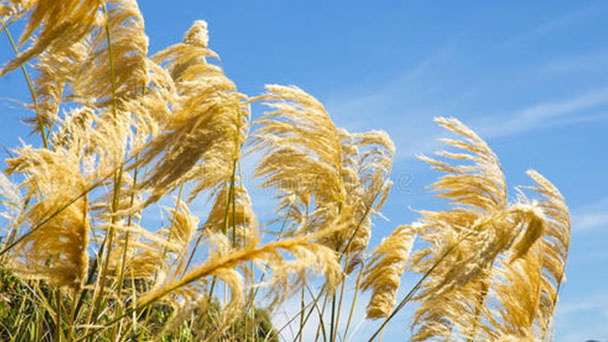
This pampas grass is a tufted evergreen perennial, also known as the "GoldBand." The arched leaf has a yellowish margin that turns to a deep golden yellow as it ages. In late summer, pinnate silvery flowers rise from tall stems and may not survive the winter in cold climates. Inflorescence may be used as an ornament when dried.
If you want to breathe new life into your garden, try planting pampas grass.This ornamental grass is popular in American gardens, although it is technically an invasive species. The following are growing and caring tips for pampas grass.
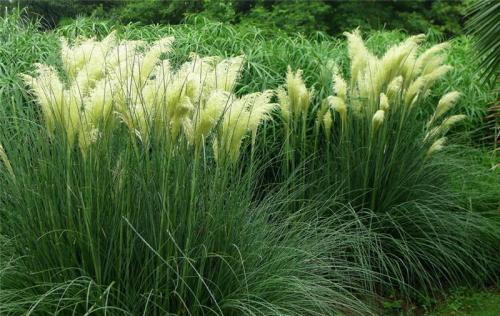
How to grow pampas grass
Starting with Seed
Unlike most different plants, developing pampas grass from seed is easy. All you want to do is pick your variety, and then sow your seeds in the early springtime. Pick a spot in your yard that receives direct daylight all day, and sow your seeds.
Don’t cowl the seeds with soil, as the warmth from the daylight and a mild watering are all the seeds want to germinate. We advise that you supply the soil a mild raking earlier than you sow your seeding. Raking the floor loosens the soil, supplying aeration to the roots of the grass, permitting it to thrive.
However, if you stay in a region with lots of birds, you’ll want to cowl the planting place with netting to cease the birds from consuming your seeds. If you don’t have any netting, then you can begin your pampas grass seeds in pots or trays indoors and then transplant to the backyard after it receives to an inch in height.
Starting your seeds indoors is additionally an appropriate concept if you stay in less warm areas of the United States. Mix up a developing medium the use of sol and perlite in a 2:1 ratio.
By including perlite to the soil, you get higher drainage. Always make certain that your container has ample drainage, and moist soil might also motivate root rot in your grass.
Choosing the Right Planting Site for Your Pampas Grass
When deciding on the best spot in your yard for your pampas grass, you want to take into account the ultimate top and width of the grass flower bed you plant. Pampas grass grows large and tall, and if you don’t account for the growth, it ought to end in the location searching cluttered.
Select a region of your yard that receives full daylight in the course of the day. Planting in shady areas is feasible with pampas grass, however you want to be conscious that the lack of daylight will have an effect on the closing peak of the grass, and some species might no longer flower barring direct daylight all day.
Avoid planting your pampas grass subsequent to the driveway or the road. This grass grows tall and wide, and it might also impede your view of the avenue and the driver’s view of your driveway. Don’t plant the grass close to any air-conditioning units, as the blades of grass may stop up caught in the machine's fan.
Make certain that you maintain the grass away for any areas of the yard the place kids play. Pampas grass appears lovely when flowering, however the leaves have razor-sharp edges, and youngsters may reduce themselves if they attempt to pull on the grass or fall into the grass by mistake.
If you’re transplanting pampas grass, then dig a gap that’s the width and peak of the plant’s root system. Place some mulch or fertilized potting soil in the hole, and then add the grass. Pampas grass doesn’t want a lot of fertilizer to develop tall and healthy.
Use your palms to separate the root ball earlier than planting, and gently pat down the soil round the roots after planting. Water the grass completely to minimize transplant shock.
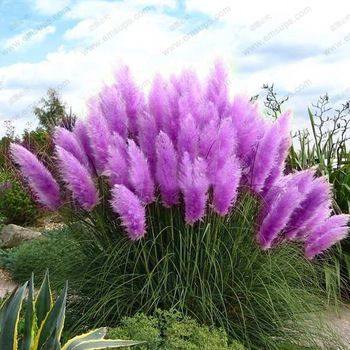
Caring for your Pampas Grass
Always water your newly planted grass wholly after transplanting. The roots require lots of moisture to get better from the stress of the transplant. Failing to water your pampas grass ought to stunt its growth, or motive it to die. Ensure that you maintain the soil uniformly moist. Push your finger an inch into the soil. If it feels moist, then your grass is fine. However, if it’s dry, it potentially means that the roots aren’t getting the moisture they need.
During the first 12 months after planting, fertilize your pampas grass in the early spring, early summer, and at the opening of the fall. After the first yr of growth, reduce again on your fertilizing protocol, and solely fertilize the grass in the early spring.
It may take up to 3-years for your pampas grass to set up itself and bloom. Every year, you’ll want to prune away historical grass and trim the roots of grasses that are turning into wild and overgrowing in the planting site.
Dividing Pampas Grass
You can propagate your pampas grass in late August to early September earlier than the wintry weather rolls around. However, we endorse that you do your propagation in the early springtime, after the final frosts land on the ground. Check your neighborhood checklist for frost dates in your location and diagram accordingly.
Propagating in the early spring offers the pampas grass the complete developing season to develop a robust root system. Follow these steps when propagating your pampas grass.
Cut the pampas grass again to 1 to 2-feet in size till you can see the base of the plant.
Examine the stems of the pampas grass at the soil level. You must see that shoots are forming at the base. Using a sharp knife, reduce away the new boom from the center of the plant.
Plant your new grass clumps at a comparable depth to what they have been used to with the mom plant. Water wholly to minimize transplant shock.
Always make certain you put on gloves and a shirt, as you would possibly reduce yourself on the sharp edges of the grass.
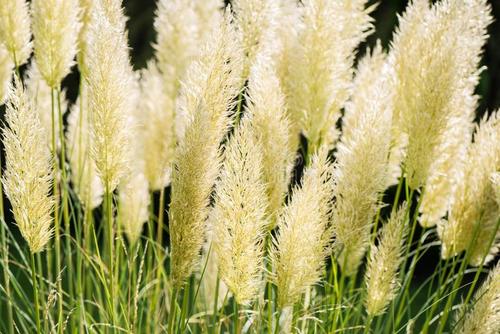
Pests and diseases affecting Pampas Grass
Pampas grass is an invasive species. Therefore, it does not now serve as a meals supply for any animals like deer and rabbits. Many bugs and birds like to nest in the grass, so be cautious when propagating in the early springtime.
Pampas grass does once in a while journey an contamination with a fungus that suggests up as spots. This fungus generally arrives for the duration of heat and wet components of the season. Use a popular plant fungicide to deal with the contamination and restore your pampas grass to health.
Ornamental and decorative purposes of pampas grass
Pampas grass is famous as it creates a decorative characteristic in your garden. This ornamental grass produces giant plumes of flora that seem to be attractive. Pampas grass is best for planting in the western states, as the plant is hardy and drought-resistant.
If you stay shut to the ocean, pampas grass is perfect for planting round your yard, as the salty air doesn’t harm the grass. Many accommodations and guesthouses on the seashore use pampas grass as a windbreak and for beach-front landscapes.
Pampas grass grows somewhere from 6 to 13-foot tall, and it spreads to a width of the equal peak in most cases. Use this grass to create privacy around your patio or pool, and plant it in the corners of your yard to supply your backyard a seamless appearance and feel.
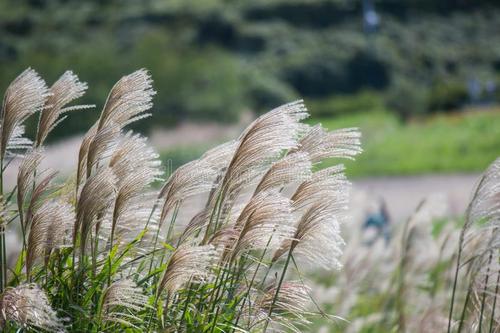
Overwintering Pampas Grass
Pampas grass can live to tell the tale of the bloodless months of winter, and even snowstorms furnished that you put together for the iciness season.
During the closing days of fall, reduce again any ancient foliage to make room for new increase the following season. We suggest long-handle loopers for trimming your pampas grass. Make certain you get rid of all of the flower stalks that are blooming, as the seeds may additionally unfold into your neighbor’s yard and begin to develop wild.
Remove any stalks that are over 1-foot in height. Before you trim, use string to tie the plant together. This manner helps to drain any extra water from the plant earlier than cutting. If you stay in an area of the United States, then you can overwinter your pampas grass except any hassle.
Spread mulch round the base of the plant and cowl it with burlap to furnish the grass with safety from the cold. Remove the burlap in the early springtime after the closing frosts fall. Using this method, the roots of your pampas grass continue to be heat and dry for the duration of the wintertime, making sure that your plant survives the season and prospers the following summer.
Latest Updated
- Benefits of Bugleweed - 7 Science-backed Health Benefits
- Bugleweed Dangers & Side Effects - Is It Poisonous?
- How to Plant Evergreen Trees - What You Should Know
- When to Plant Evergreens - Grow Guide for Evergreen Trees
- 12 Wonderful Evergreen Shrubs for Your Garden
- 12 Popular Evergreen Plants with Pictures for Beginners
- When And How To Prune A Lilac Bush Like a Pro
- How to Grow & Care for Lilac Vine (Hardenbergia Violacea)
- Japanese Lilac Tree (Syringa Reticulata) Care & Propagation Guide
- Shumard Oak Pros and Cons - What to Know
Popular Articles
- Winter maintenance of Antirrhinum Majus
- How to Grow Terminalia Mantaly Tree
- How to Grow and Care for Crossostephium Chinense
- How to grow Antirrhinum Majus in spring
- Peristeria Elata (Dove Orchid) Profile: Info & Care Guide
- Underwatered Snake Plant (Sansevieria Trifasciata) - Signs And How To Fix
- How to Care for Brazilian Jasmine Plant (Mandevilla Sanderi)
- How to Grow & Care for Graptopetalum Purple Delight in Summer
- Rosa Chinensis (China Rose): Plant Growing & Care Tips
- How to Care for Baby Sun Rose (Aptenia Cordifolia)